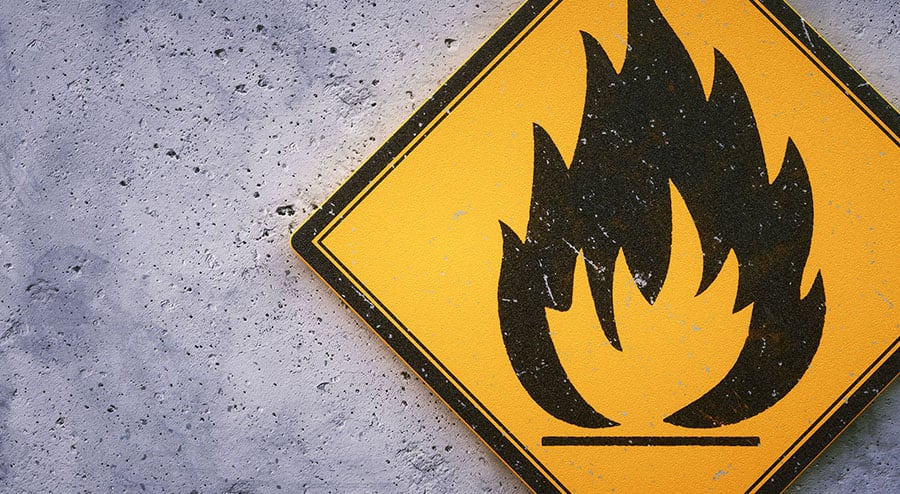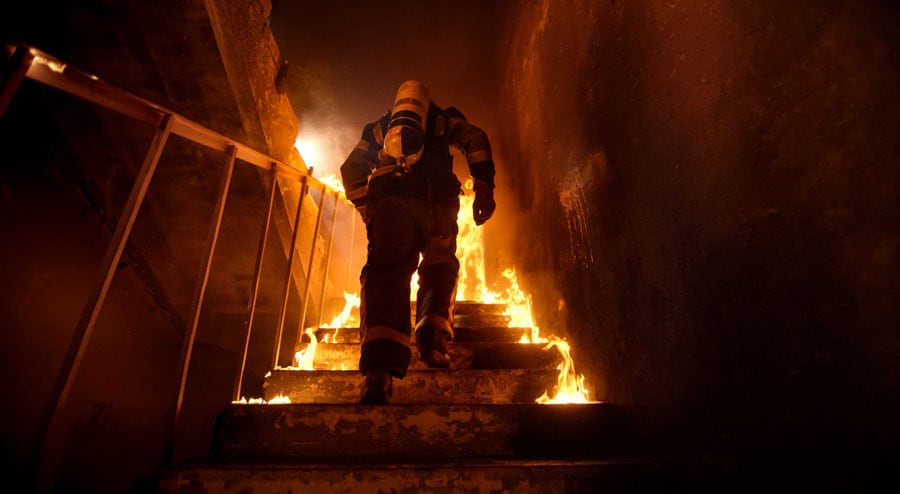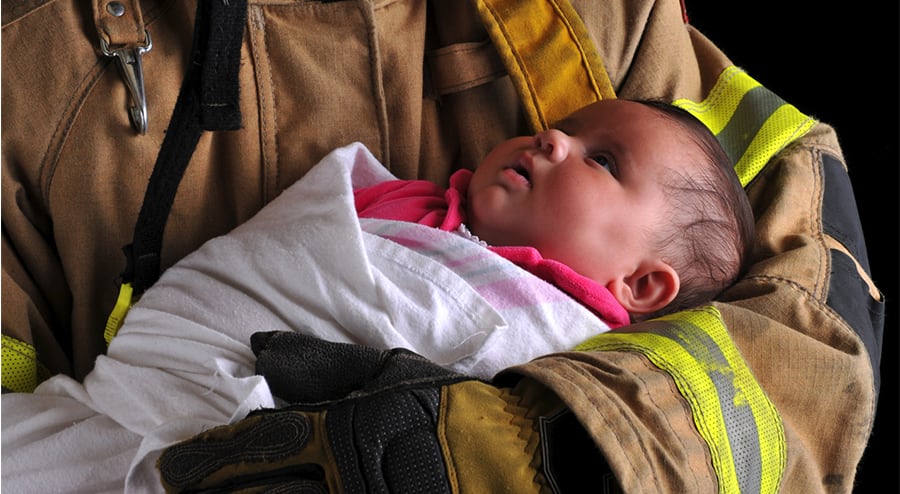Fires can have devastating consequences so fire safety at home should be a concern for every homeowner. Fire extinguishers are hence essential in protecting lives and property and provide a means of defense against small fires before they escalate. There are various different types of fire extinguishers available in the market and their specific features and applications should be understood in order to make informed decisions about the most suitable fire extinguishers for a home’s individual needs and potential fire risks.

Properly using and prompt handling fire extinguishers can be achieved by understanding the PASS technique – Pull, Aim, Squeeze, and Sweep. Safety precautions before attempting to use a fire extinguisher and the importance of fire extinguisher training should be understood to use these tools effectively. Regular maintenance and inspection should be conducted to ensure extinguishers remain in optimal working condition and safely disposed of if they expire or become damaged. Homeowners should prioritize fire safety and preparedness in their living spaces, ultimately contributing to safer communities and well-protected households.
Types of Home Fire Extinguishers
When it comes to fire safety at home, having the right fire extinguisher can make a significant difference in containing a fire effectively. Homeowners can choose from several types of fire extinguishers, each specifically designed to tackle different types of fires. These extinguishers are classified based on the type of fire they are capable of combating, known as fire classes. The most common fire classes are Class A, Class B, Class C, Class D, and Class K.
Dry Chemical Fire Extinguishers
Dry chemical fire extinguishers are the most versatile and widely used type, suitable for combating Class A, Class B, and Class C fires. They work by releasing a fine powder composed of ammonium phosphate, ammonium sulfate, or sodium bicarbonate. The powder interrupts the chemical reaction of the fire and helps smother the flames. These extinguishers are effective against fires involving ordinary combustibles (Class A), flammable liquids (Class B), and electrical fires (Class C).
CO2 (Carbon Dioxide) Fire Extinguishers
CO2 fire extinguishers are specifically designed for electrical fires (Class C) and are safe to use on sensitive electrical equipment. They work by displacing oxygen, which starves the fire of its fuel. The carbon dioxide gas is non-conductive, making it ideal for use on electrical equipment without causing damage. However, CO2 extinguishers are not suitable for Class A or Class B fires, as they do not cool the fuel source and may lead to re-ignition.
Water-Based Fire Extinguishers
Water-based fire extinguishers are effective against Class A fires involving ordinary combustibles like wood, paper, and cloth. These extinguishers work by cooling the burning material and reducing the fire’s temperature. However, they should never be used on flammable liquids (Class B) or electrical fires (Class C), as water can spread the fire or pose electrocution hazards.
Foam Fire Extinguishers
Foam fire extinguishers are designed to combat fires fueled by flammable liquids such as gasoline, oil, or solvents (Class B). The foam blanket creates a barrier that separates the fire from the oxygen, extinguishing the flames. Foam extinguishers are not suitable for Class A or Class C fires and should not be used on electrical equipment.
Wet Chemical Fire Extinguishers
Wet chemical fire extinguishers are specifically tailored to fight cooking fires caused by grease, oil, and fats (Class K). They work by forming a soapy foam that cools the fire and suppresses the release of flammable vapors. Wet chemical extinguishers are not intended for use on other fire classes.
Clean Agent Fire Extinguishers
Clean agent fire extinguishers are suitable for protecting delicate electrical equipment and valuable assets, as they leave no residue and do not harm sensitive components. These extinguishers use clean agents like Halotron or FM-200 to extinguish fires. They are primarily used in environments where avoiding damage from traditional extinguishing agents is critical.
Having a basic understanding of the different types of home fire extinguishers allows homeowners to make informed decisions about the most appropriate extinguisher to keep at hand, based on the potential fire risks they may face in their living spaces.
Proper Use and Handling
It is important to understand how to properly use and handle your fire extinguisher in order to be able to combat fires effectively and keep your home and family safe. A prepared homeowner should not only know how to implement the PASS technique when using a fire extinguisher and understand the safety precautions before using the tool but also consider training programs and create a family education plan before an emergency occurs.
Explanation of the PASS Technique for Using a Fire Extinguisher Effectively
Familiarizing yourself with the PASS technique allows you to maximize the effectiveness of the fire extinguisher. PASS stands for Pull, Aim, Squeeze, and Sweep. First, pull the pin located at the top of the extinguisher, which will break the tamper seal and allow you to discharge the extinguishing agent. Next, aim the nozzle or hose at the base of the fire, not the flames. Squeezing the handle will release the extinguishing agent, and finally, sweep the nozzle or hose from side to side to cover the entire base of the fire. This technique ensures the extinguisher is used efficiently, quickly smothering the flames and preventing further spread.
Safety Precautions Homeowners Should Take Before Attempting to Extinguish a Fire
Before attempting to use an extinguisher in a fire emergency, assess the situation carefully and prioritize safety. If the fire is already spreading rapidly or poses a significant risk, it is safer to evacuate and call emergency services immediately. Homeowners should never attempt to extinguish a fire if they feel unsure or uncomfortable doing so. Additionally, before approaching the fire, it is essential to position oneself with an escape route behind, ensuring a safe way to retreat if necessary.
Importance of Fire Extinguisher Training
Fire extinguisher training is highly beneficial for homeowners and their families, as it equips them with the knowledge and skills needed to respond confidently and effectively during a fire emergency. Training sessions typically cover the different types of fire extinguishers, the fire classes they can combat, and the proper techniques for their use. Professionals conduct hands-on demonstrations, allowing participants to practice using extinguishers safely. By undergoing this training, homeowners gain the confidence to act swiftly in the event of a fire and increase their chances of successfully extinguishing small fires before they escalate.
Steps to Educate Family Members about the Proper Use of Fire Extinguishers
Educating family members about fire safety and the proper use of fire extinguishers allows for homeowners to create a comprehensive fire preparedness plan at home. This can be done through a family meeting or fire safety drill, where all members learn about the locations of fire extinguishers, how to identify the types available, and the PASS technique for effective usage. Demonstrations with dummy fires can be conducted to practice the steps of using an extinguisher safely. It is essential to stress the importance of identifying when to use an extinguisher and when to evacuate safely. By involving all family members in this education process, everyone can play an active role in safeguarding their home and loved ones in the face of a fire emergency.
Fire Extinguisher Maintenance and Inspection
There are many aspects of a fire extinguisher to understand to ensure its proper use and safety. Knowing the general guidelines behind the lifespan of a fire extinguisher, how to inspect it, and signs of damage, and how to correctly dispose of one are important in properly owning a fire extinguisher.
The Typical Lifespan of a Home Fire Extinguisher
Home fire extinguishers are designed to be reliable and durable, but they do have a limited lifespan. Typically, most fire extinguishers have a shelf life of 5 to 15 years, depending on the type and manufacturer. It is crucial for homeowners to check the label on their extinguishers to determine the expiration date or the date of manufacture. If the extinguisher is beyond its expiration date, it should be replaced immediately to ensure it remains effective during emergencies.
How Often to Inspect and Test Fire Extinguishers for Optimal Functionality
Regular inspections ensure that your fire extinguishers are in proper working condition when needed. Experts recommend conducting monthly visual checks to verify that the extinguisher is in its designated place, the pressure gauge shows it is within the operational range, the safety pin is intact, and there are no visible signs of damage or leakage. Additionally, an annual professional inspection should be performed by a qualified fire protection service to assess the extinguisher’s overall condition, including the effectiveness of its seal and the pressure level of the extinguishing agent.
Signs of a Malfunctioning or Damaged Fire Extinguisher
Homeowners should look for any signs that their fire extinguisher might be malfunctioning or damaged such as a cracked or corroded cylinder, a broken safety seal, a missing or damaged pull pin, or a pressure gauge needle that falls outside the operational range. If any of these issues are detected during a routine inspection, the fire extinguisher should be replaced or serviced promptly by a qualified professional. It is essential to address these problems early on to ensure the extinguisher is ready for use in an emergency.
Safe Disposal of Expired or Damaged Fire Extinguishers
Environmental hazards and accidents can be avoided with proper disposal of expired or damaged fire extinguishers. Homeowners should never attempt to dispose of fire extinguishers in regular household trash or recycling bins. Instead, they can contact the local fire department or hazardous waste collection facility for guidance on how to dispose of the extinguisher safely. These authorities can either handle the proper disposal or direct homeowners to authorized facilities that can take care of it. Ensuring the safe and responsible disposal of fire extinguishers is an important step in maintaining fire safety at home.
Fire Safety Precautions at Home
There are various tools that can be utilized in preventing or combating fires at home. Portable fire extinguishers, have multiple variations depending on the area of one’s home, and certain accessories should be considered when maximizing the safety of your home.
Advantages and Disadvantages of Portable Fire Extinguishers for Home Fire Safety
Portable fire extinguishers offer homeowners a valuable first line of defense against small fires that can escalate rapidly. Advantages of these extinguishers include their compact size, ease of use, and effectiveness in quickly suppressing fires before they spread. They are affordable and readily available, making them accessible to homeowners for home fire safety. However, portable fire extinguishers also have some limitations. They are only effective against small fires and may not be sufficient to combat larger or more intense fires. Additionally, using a fire extinguisher without proper training can be challenging and may result in wasted time or inadequate fire suppression.
Considerations for Having Multiple Fire Extinguishers in Different Areas of the Home
It is wise for homeowners to have multiple fire extinguishers strategically placed in different areas of the home. The kitchen, where cooking fires are more likely to occur, should have a kitchen-specific fire extinguisher, such as a wet chemical extinguisher designed to combat grease fires. Other common areas, like the living room and hallway, should have general-purpose extinguishers capable of handling Class A, B, and C fires. Bedrooms and upper levels should also be equipped with extinguishers for quick access in case of a fire during the night. By having multiple extinguishers positioned throughout the home, homeowners can respond promptly to fires, potentially preventing them from causing extensive damage.
Recommended Fire Extinguisher Accessories or Additional Equipment for Enhanced Safety
There are certain accessories and equipment in addition to having fire extinguishers that can enhance safety. Fire extinguisher cabinets or wall mounts can keep extinguishers securely in place and protect them from tampering or accidental damage. Additionally, fire blankets are useful for smothering small fires or wrapping around a person in the event of their clothes catching fire. Smoke alarms and carbon monoxide detectors are essential components of home fire safety and provide early warning of potential fire hazards. Homeowners should also consider installing fire escape ladders for upper-level rooms, providing a safe means of exit in case of a fire blocking the main exit routes.
Fire Safety Regulations and Guidelines for Residential Properties
Fire safety regulations and guidelines may vary depending on the region or country, so homeowners should familiarize themselves with the specific requirements in their area. These regulations typically cover aspects such as the minimum number and placement of fire extinguishers, maintenance and inspection schedules, and the use of specific types of extinguishers in different settings. Compliance with these regulations not only ensures legal compliance but also contributes to an overall safer living environment for all residents. Homeowners can consult local fire departments, fire safety organizations, or building authorities to obtain comprehensive information on fire safety regulations and guidelines applicable to their residential properties.
Take Away
Understanding the types of home fire extinguishers and their proper use is vital for homeowners to protect lives and property from fire emergencies. Having the right extinguisher for specific fire types, knowing the PASS technique, and prioritizing fire safety through regular maintenance and training are key aspects to ensure a safer living environment. By adhering to regulations and guidelines and being vigilant for signs of malfunctioning extinguishers, homeowners can stay prepared and proactive in fire safety.




